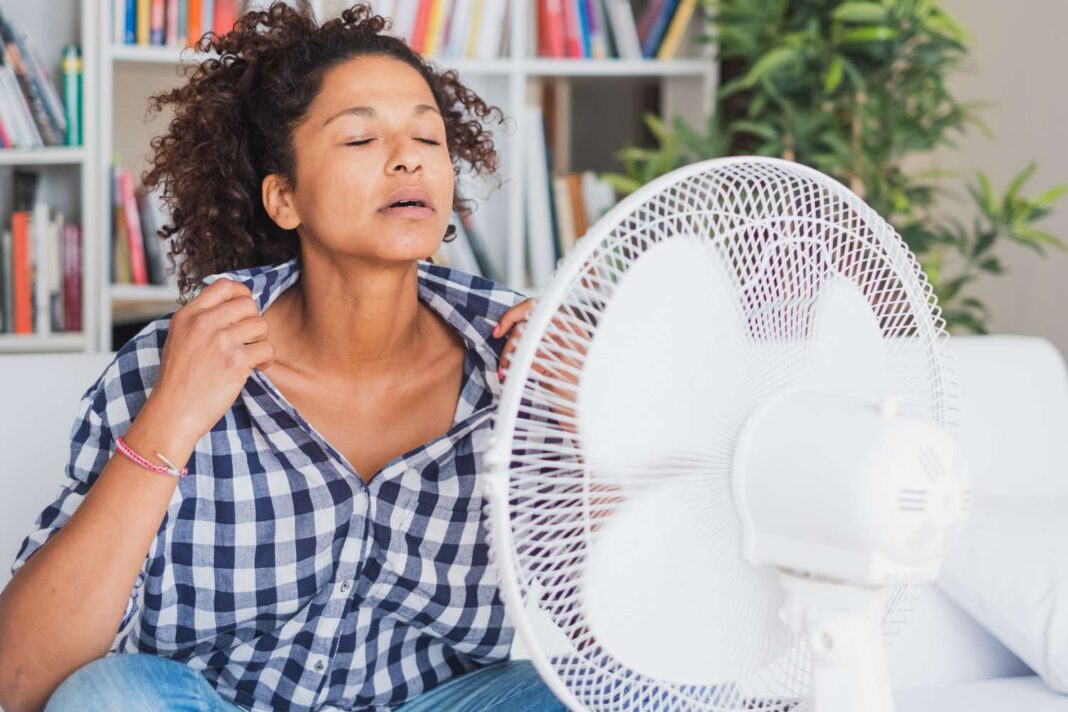Sweat Glands and Control of Sweating
Sweating via the sweat glands is the body’s most important method of regulating body temperature. In fact, when the air temperature is higher than our skin temperature, the evaporation of sweat is the only means for the body to reduce body temperature and prevent overheating.
When the body temperature becomes too hot, it is sensed by the hypothalamus in the brain. The hypothalamus, in turn, sends signals (via the sympathetic nervous system) to the sweat glands to increase sweat production.
In addition to medical conditions that can affect sweating (discussed below), how the body controls sweating can vary based on factors such as acclimation (how well the body has adjusted to increased heat), elevation, fluid status in the body (such as whether dehydration is present) and more.
There are three primary types of sweat glands—eccrine, apocrine, and apoeccrine. Of these, eccrine sweat glands are of greatest importance in regulating body temperature.
Types and Definition
A lack of sweating may be localized, affecting only certain regions of the body, or generalized. It may also be compensatory as the body responds to increased sweating (hyperhidrosis) in one part of the body by decreased sweating in another.
Symptoms and Complications
Most of the time, reduced sweating goes largely unnoticed unless a person suffers a heat-related illness.
Symptoms of a lack of sweating may include:
- Feeling hot or overheated
- Difficulty or an inability to cool down after becoming overheated
- Heat “intolerance”
- Lightheadedness
- Flushing
- Muscle cramps in the arms, legs, abdomen, or back, often lasting for a significant period of time
- Weakness.
- Nausea
- Palpitations
- Tingling pain in the extremities
- Rashes
Complications
Complications of a lack of sweating (hypohidrosis or anhidrosis) are the most common reason why a person will seek medical treatment and receive a diagnosis.
Treatment
The treatment of hypohidrosis or anhidrosis begins with reducing the risk of complications and addressing the underlying cause when possible. Simply having an awareness of the condition and being able to recognize the early symptoms of heat exhaustion and heatstroke can be very helpful.
Home Remedies
Home remedies are the mainstay of treatment for the majority of people with hypohidrosis or anhidrosis. This includes avoiding situations that can result in complications, such as high temperatures outside and excess exercise as well as staying well hydrated. Moving slowly when you need to be outside in hot weather is also important.
If you begin to notice overheating, a number of measures may be helpful:
- Use a cool water or ice pack, especially when cooling is applied to areas such as the neck, forehead, armpits, and groin.
- If a rash is present, applying powder (like baby powder) may be soothing.
- Drink an electrolyte/sport drink if available, otherwise drink plenty of water.
Coping and Prevention
An ounce of prevention is important with sweating disorders as with other conditions. If you are living with hypohidrosis or anhidrosis, avoid exercising out-of-doors when it’s hot, especially in hot, humid weather.
Indoors, use air conditioning to keep yourself comfortable. Stay well hydrated. Loose-fitting, lightweight clothing is usually most comfortable.
If you start becoming warm, move indoors if outside, and turn the air conditioning to a lower temperature if indoors. Having a spray bottle on hand may help you cool down quickly if you start to notice overheating. This is particularly helpful when applied to regions such as your armpits, groin, and neck.
Summary
A lack of sweating (hypohidrosis or anhidrosis) can range from mild to serious and has many potential underlying causes. Fortunately, having an awareness of your tendency to overheat, and quickly instituting at home remedies when needed may be all that’s needed to keep yourself healthy.
FAQs
Q: What are the common causes of hypohidrosis or anhidrosis?
A: The causes of hypohidrosis or anhidrosis may be hereditary or acquired and can include skin conditions, connective tissue diseases, conditions affecting the central or peripheral nervous system, or even medications.
Q: How can I prevent complications from hypohidrosis or anhidrosis?
A: To prevent complications, it is important to avoid situations that can result in overheating, such as high temperatures outside and excess exercise. Staying well hydrated and moving slowly when outside in hot weather can also help.
Q: What are the symptoms of hypohidrosis or anhidrosis?
A: Symptoms of hypohidrosis or anhidrosis may include feeling hot or overheated, difficulty or inability to cool down after becoming overheated, heat “intolerance”, lightheadedness, flushing, muscle cramps, weakness, nausea, palpitations, tingling pain, and rashes.




